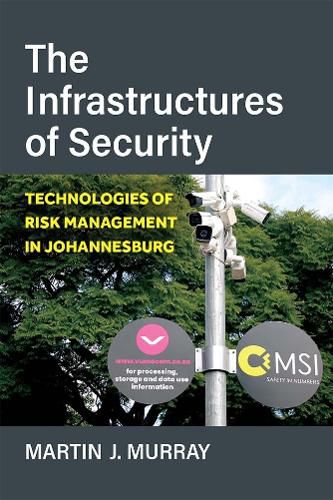Readings Newsletter
Become a Readings Member to make your shopping experience even easier.
Sign in or sign up for free!
You’re not far away from qualifying for FREE standard shipping within Australia
You’ve qualified for FREE standard shipping within Australia
The cart is loading…






Much of the South African government’s response to crime-especially in Johannesburg-has been to rely increasingly on technology. This includes the widespread use of video cameras, Artificial Intelligence, machine-learning, and automated systems, effectively replacing human watchers with machine watchers. The aggregate effect of such steps is to determine who is, and isn’t, allowed to be in public spaces-essentially another way to continue segregation.
In The Infrastructures of Security, author Martin J. Murray concentrates on not only the turn toward technological solutions to managing the risk of crime through digital (and software-based) surveillance and automated information systems, but also the introduction of somewhat bizarre and fly-by-night experimental answers to perceived risk and danger. Digitalized surveillance is significant for two reasons: first, it enables monitoring to take place across wide
geographical distances with little time delay ; and second, it allows for the active sorting, identification, and
tracking of bodies, behaviors, and characteristics of subject populations on a continuous, real-time basis.
These new software-based surveillance technologies represent monitoring, tracking, and information gathering without walls, towers, or guards.
$9.00 standard shipping within Australia
FREE standard shipping within Australia for orders over $100.00
Express & International shipping calculated at checkout
Much of the South African government’s response to crime-especially in Johannesburg-has been to rely increasingly on technology. This includes the widespread use of video cameras, Artificial Intelligence, machine-learning, and automated systems, effectively replacing human watchers with machine watchers. The aggregate effect of such steps is to determine who is, and isn’t, allowed to be in public spaces-essentially another way to continue segregation.
In The Infrastructures of Security, author Martin J. Murray concentrates on not only the turn toward technological solutions to managing the risk of crime through digital (and software-based) surveillance and automated information systems, but also the introduction of somewhat bizarre and fly-by-night experimental answers to perceived risk and danger. Digitalized surveillance is significant for two reasons: first, it enables monitoring to take place across wide
geographical distances with little time delay ; and second, it allows for the active sorting, identification, and
tracking of bodies, behaviors, and characteristics of subject populations on a continuous, real-time basis.
These new software-based surveillance technologies represent monitoring, tracking, and information gathering without walls, towers, or guards.